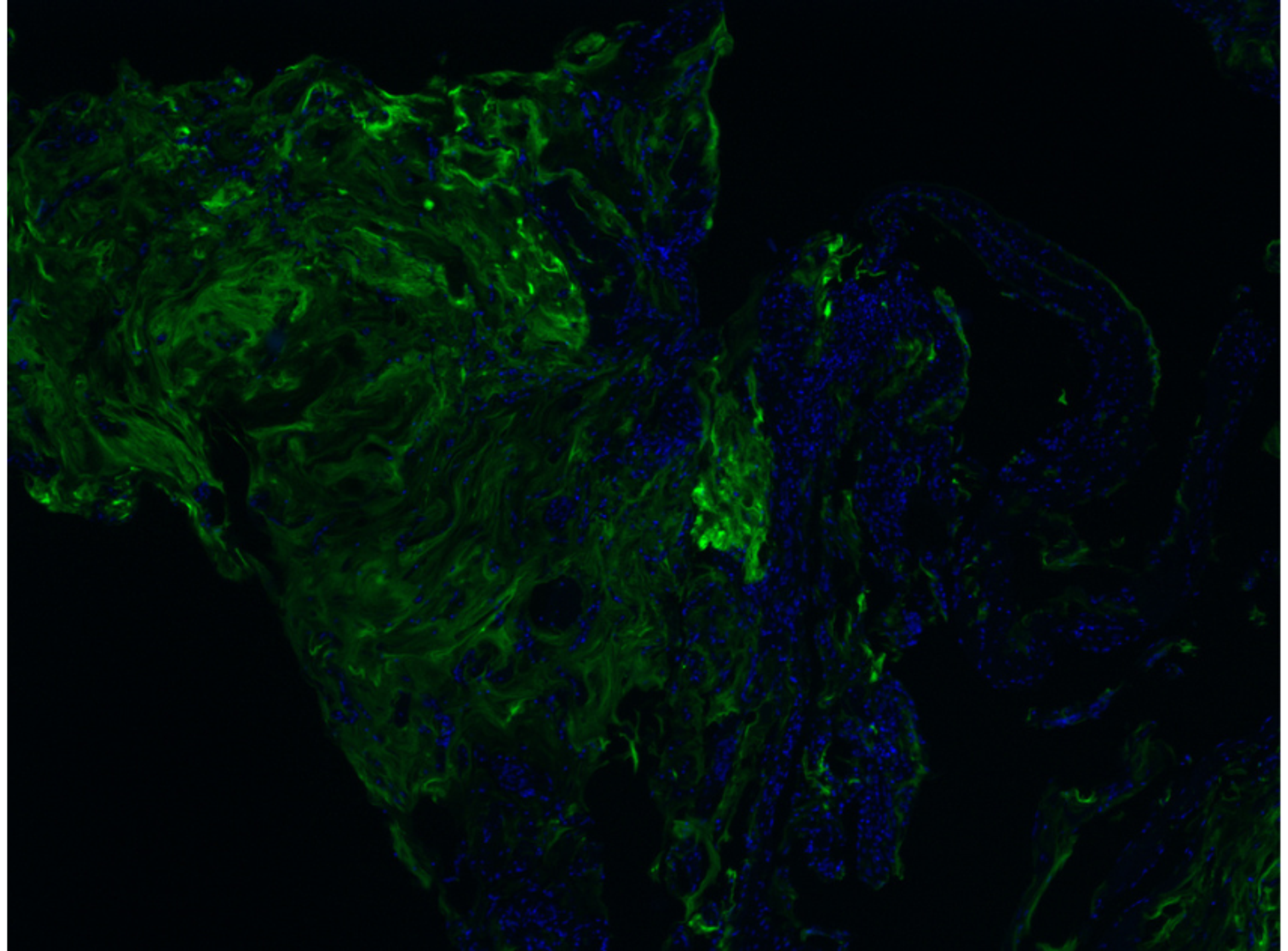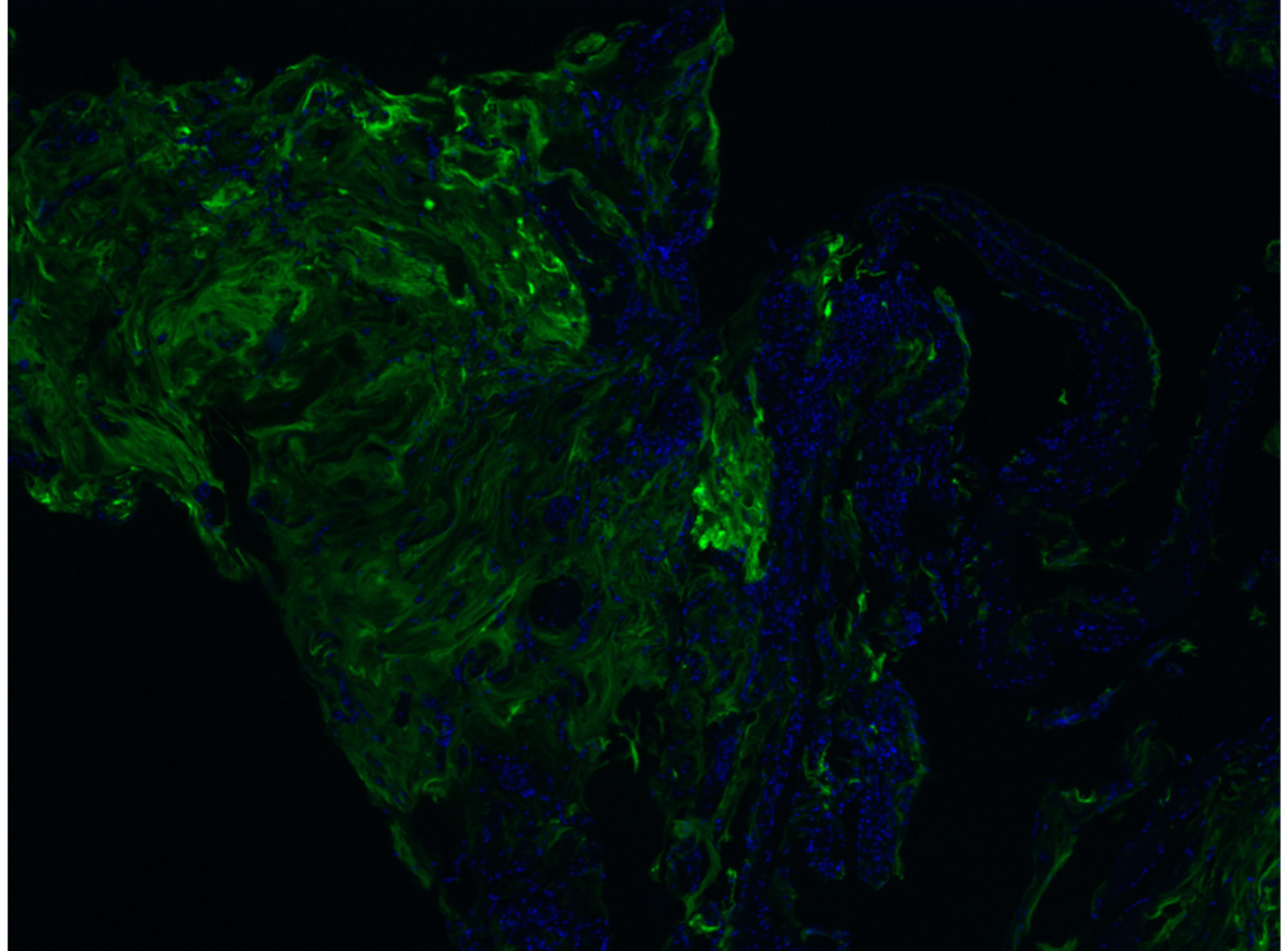Spatial biology and purified antibodies shape cell biology research
Explore the power of purified antibodies and discover how spatial omics has revolutionized cell biology
22 Apr 2025
Prof. Jared K. Burks, Professor and Co-Director of the Flow Cytometry & Cellular Imaging Core Facility, Department of Leukemia, M.D. Anderson Cancer Center (left), and Brent Heller, Head of Sales for Tissue Diagnostics, Western North America, MilliporeSigma (right).
The understanding of cell biology — focused on cell structure, function, and behavior — is crucial for advancing biological and medical research. By studying individual cells, researchers gain initial insights into tissues and the entire organism's complexity. Spatial biology represents a significant leap forward, examining the three-dimensional distribution of cell types within tissues to understand how cells interact in health and disease. This approach identifies cell types and their spatial relationships.
Spatial omics has further revolutionized cell biology by integrating proteomics, genomics, metabolomics, and transcriptomics data directly from tissues using advanced imaging and sequencing technologies. Purified antibodies are essential in spatial biology, enabling researchers to pinpoint tumor and stromal regions, identify blood vessels, and distinguish cell types like T cells, B cells, macrophages, and tumor cells, thereby revealing their spatial relationships.
Power of purified antibodies
Purified antibodies refer to antibodies that have been isolated and purified from a mixture of proteins or other substances. In research and diagnostics, purified antibodies are used because they are specific to particular antigens, and can bind to these targets with high affinity and specificity.
Burks further highlights the benefit of these antibodies, “cell and tissue boundaries are used by clinical pathologists for diagnosis, but spatial transcriptomics and spatial metabolomics can’t always show the edges of objects. Purified antibodies can give us clearer pictures of cell boundaries and are better at identifying cell types, dramatically improving the data sets that we have, for example by making sure that we don’t allocate a metabolite or a transcript to the wrong cell.”
Purified antibodies can be used for a variety of processes for viewing the spatial environment or the cellular neighborhood, at different resolutions, from whole cell and tissue level down to receptor-ligand interactions using electron microscopy and super resolution microscopy.
“Purified antibodies are a great starting material. They are ready for conjugation and labelling, whichever process you use, whether it’s utilization of the fluorophore, an oligo or some other heavy metal ion. They allow researchers to mitigate the risks involved in purifying their own antibodies or using off-the-shelf antibodies that include preservatives or other excipients,” says Heller.
“A lot of biopharma companies developing new drugs are using companion diagnostics that might not be clinically validated or CLIA certified to try to evaluate whether their drug is appropriate for individual patients, because clinical diagnostics hasn’t caught up with the technology yet.” Burks continues, “I think we are going to see researchers increasingly using spatial biology tools in combination with purified antibodies to determine which drug should be given to which patient and why. These tools will then move from the companion diagnostic space to the clinical diagnostic space.”
Decades of expertise in antibody development

Purified antibodies enhance the precision of spatial biology studies by providing reliable data on cellular interactions within tissues. ©lightwise @123rf.com
MilliporeSigma’s Cell Marque™ purified antibody portfolio is backed by decades of experience in antibody development. Cell Marque products are created with sustainable cell line production and an ISO 13485 manufacturing environment. The purified antibody portfolio is carrier-free and formulated to enhance flexibility in diagnostic and research workflows. It can be used in a range of applications, including immunofluorescence, myocardial perfusion imaging (MIBI), oligonucleotide labeling, metal labeling for CyTOF® mass cytometry, and imaging mass cytometry (IMC).
Purified antibodies are a great starting material. They are ready for conjugation and labelling, whichever process you use, whether it’s utilization of the fluorophore, an oligo or some other heavy metal ion.
Brent Heller Head of Sales for Tissue Diagnostics in the Western part of North America for MilliporeSigma
“Finding quality antibodies that are appropriate for use in spatial biology is key; identifying what works and what doesn't for your particular assays requires guidance and reference information, which is done well by Cell Marque,” says Burks. “Working in spatial biology, we might be using as many as 80 antibodies at any one time. Because of the time and costs involved you don’t want to have to guess which antibodies are going to work. The information that Cell Marque provides on antigen retrieval conditions, antibody dilution, antibody diluent and control tissues are really key in identifying the antibodies that you're going to use together,” he adds.
Therefore, having access to validated antibodies and supportive information from Cell Marque is crucial for the success of spatial biology research, facilitating accurate and efficient experimentation, while minimizing costs and uncertainties.
As spatial biology is still a new area of study, researchers want the confidence provided by an antibody clone that has been clinically relevant for years, with a lot of evidence behind it. “Research in spatial biology needs an assay that has a good concentration of correctly conjugated material, which is why we created our purified antibody portfolio. The clones come from the Cell Marque IVD portfolio, including sources developed in-house that are unique to us. This means that the clones are well documented, with a validated history of their use in research and clinical diagnostics,” explains Heller. He continues, “We've added additional sites to our manufacturing process so that we can support production, supply and provide material in a timely fashion, including next-day turnaround for some of the higher volume antibodies. This is our investment to help support the needs of our customers.”
The development and availability of a purified antibody portfolio by Cell Marque, with a focus on concentration, conjugation quality, validated history, and supply, plays a pivotal role in advancing spatial biology research by providing reliable tools and support to researchers.
The future of diagnostics and therapeutics
Spatial biology is still an emerging branch of cell biology, but it has potential to make significant changes to how researchers understand disease and how drug developers create new therapeutics and diagnostics.
While tumors originate from a genetic mutation, Burks believes that where they develop and the damage they cause is driven by spatial biology. “I think that the mutation that is taking advantage of a spatial anomaly. The better we can understand that initial spatial location, the better we are going to understand how diseases progress, and how we can find the right therapeutic approaches more quickly. This could be repurposing existing drugs, understanding whether the CAR T or CAR NK cells are getting to the right part of the tissue in immunotherapy, or seeing how the patient’s microbiome affects their response to treatment,” he explains. “The better we understand, the better we can identify what actually happened, meaning that we can stimulate positive pathways or stop the negative pathways, from occurring.”
Exploiting the potential of digital pathology and spatial biology will require management of huge datasets and in-depth data analytics, along with the use of artificial intelligence algorithms.
Heller concludes, “The scientific and analytic advancements could open a new chapter in the future of therapeutics and clinical diagnostics. For years we've discussed personal medicine, and this gets down to a personalized cellular level, allowing us to not just understand what the disease is but also to use this information to put patients on the correct treatment plan.”

